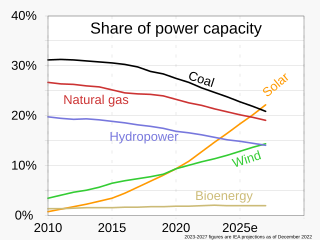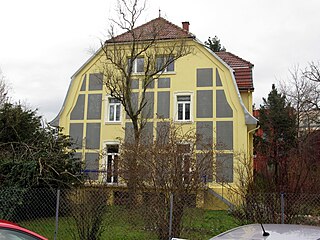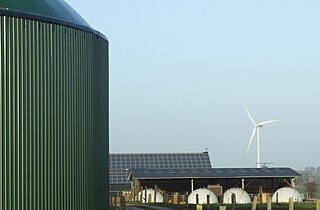International Renewable Energy Alliance (REN Alliance) is a formal partnership entered into on 4 June 2004 by five non-profit international renewable energy organisations: [1]
They represent the hydro, geothermal, solar, and wind power/energy and bioenergy sector. The alliance provides a unified cross-sectoral voice on renewable energy in international and regional energy fora and media.
Climate change concerns, coupled with high oil prices, peak oil, and increasing government support, are driving increasing renewable energy legislation, incentives and commercialization. [2] As of 2011, 119 countries have some form of national renewable energy policy target or renewable support policy. National targets now exist in at least 98 countries. There is also a wide range of policies at state/provincial and local levels. [3]
As of December 2019 [update] , the honorary chairman of the REN Alliance is former Australian senator Peter Rae, who was previously also chairman of Hydro Tasmania. [4]

Renewable energy is energy that is collected from renewable resources that are naturally replenished on a human timescale. It includes sources such as sunlight, wind, the movement of water, and geothermal heat. Although most renewable energy sources are sustainable, some are not. For example, some biomass sources are considered unsustainable at current rates of exploitation. Renewable energy often provides energy for electricity generation to a grid, air and water heating/cooling, and stand-alone power systems. Renewable energy technology projects are typically large-scale, but they are also suited to rural and remote areas and developing countries, where energy is often crucial in human development. Renewable energy is often deployed together with further electrification, which has several benefits: electricity can move heat or objects efficiently, and is clean at the point of consumption. In addition, electrification with renewable energy is more efficient and therefore leads to significant reductions in primary energy requirements.

Energy development is the field of activities focused on obtaining sources of energy from natural resources. These activities include production of renewable, nuclear, and fossil fuel derived sources of energy, and for the recovery and reuse of energy that would otherwise be wasted. Energy conservation and efficiency measures reduce the demand for energy development, and can have benefits to society with improvements to environmental issues.

Renewable energy plays an important and growing role in the energy system of the European Union. The Europe 2020 strategy included a target of reaching 20% of gross final energy consumption from renewable sources by 2020, and at least 32% by 2030. The EU27 reached 22% in 2020, up from 9.6% in 2004. These figures are based on energy use in all its forms across all three main sectors, the heating and cooling sector, the electricity sector, and the transport sector.

The International Solar Energy Society (ISES) is a global organization for promoting the development and utilisation of renewable energy. ISES is a UN-accredited NGO headquartered in Freiburg im Breisgau, Germany. Dr David S. Renné is the current president.

Renewable energy in Germany is mainly based on wind and biomass, plus solar and hydro. Germany had the world's largest photovoltaic installed capacity until 2014, and as of 2021 it has over 58 GW. It is also the world's third country by installed total wind power capacity, 64 GW in 2021 and second for offshore wind, with over 7 GW. Germany has been called "the world's first major renewable energy economy".

Renewable energy commercialization involves the deployment of three generations of renewable energy technologies dating back more than 100 years. First-generation technologies, which are already mature and economically competitive, include biomass, hydroelectricity, geothermal power and heat. Second-generation technologies are market-ready and are being deployed at the present time; they include solar heating, photovoltaics, wind power, solar thermal power stations, and modern forms of bioenergy. Third-generation technologies require continued R&D efforts in order to make large contributions on a global scale and include advanced biomass gasification, hot-dry-rock geothermal power, and ocean energy. As of 2012, renewable energy accounts for about half of new nameplate electrical capacity installed and costs are continuing to fall.

The World Wind Energy Association (WWEA) is an international non-profit association representing the wind power sector worldwide, with members in 100 countries, amongst them the leading national and regional wind energy associations. The organisation works for the promotion and worldwide deployment of wind energy technology and advocates a future energy system based on renewable energy.

Renewable energy in Finland grew to 38.7% of total final energy consumption by year end 2014, achieving joint second position with Latvia in terms of renewable energy consumption by share amongst the EU-28 countries, behind its neighbour Sweden in first position on a 52.6% share. The 2014 share in Finland breaks down as renewable energy providing 52% of the heating and cooling sector, 31.4% of the electricity sector and 21.6% of the transport sector. By 2014, Finland had already exceeded its 2020 target for renewable energy use under the EU renewable energy directive as shown in the table of country targets.

China is the world's leader in electricity production from renewable energy sources, with over triple the generation of the second-ranking country, the United States. China's renewable energy sector is growing faster than its fossil fuels and nuclear power capacity, and is expected to contribute 43 per cent of global renewable capacity growth. China's total renewable energy capacity exceeded 1,000 GW in 2021, accounting for 43.5 per cent of the country's total power generation capacity, 10.2 percentage points higher than in 2015. The country aims to have 80 per cent of its total energy mix come from non-fossil fuel sources by 2060, and achieve a combined 1,200 GW of solar and wind capacity by 2030.

Energy in Mexico describes energy and electricity production, consumption and import in Mexico.

Peter Elliot Rae AO is an Australian retired politician who represented the Liberal Party for the state of Tasmania in the Australian Senate. He served as a Senator from 1967 until his resignation in January 1986. He was subsequently elected to the division of Bass in the Tasmanian House of Assembly at the February 1986 election, serving until his defeat on 13 May 1989.

100% renewable energy means getting all energy from renewable resources. The endeavor to use 100% renewable energy for electricity, heating, cooling and transport is motivated by climate change, pollution and other environmental issues, as well as economic and energy security concerns. Shifting the total global primary energy supply to renewable sources requires a transition of the energy system, since most of today's energy is derived from non-renewable fossil fuels.
The International Hydropower Association (IHA) is a non-profit, international organisation and membership association representing the global hydropower sector.
The World Bioenergy Association (WBA) is an international NGO and non-profit association that represents the bioenergy sector globally. The organisation works to promote the use of sustainable bioenergy which includes Biomass, Biofuels and Biogas. The WBA's mission statement is to 'promote the use of sustainable bioenergy, globally'.

Renewable energy in Mexico contributes to 26 percent of electricity generation in Mexico. As of 2009, electricity generation from renewable energy comes from biomass, hydro power, geothermal, solar power and wind. There is a long term effort established to increase the use of renewable energy sources. The amount of geothermal energy used and harvested, places Mexico as number four in the world.

Renewable energy in Turkey is mostly hydroelectricity, geothermal energy and solar energy. Although sun and wind could supply plenty of energy in Turkey, hydropower is the only renewable energy which is fully exploited, averaging about a fifth of national electricity supply. However in drought years much less electricity is generated by hydro. Over half of capacity is renewables, and it is estimated that over half of generation could be from renewables by 2026, but Turkey has invested less in solar and wind power than similar Mediterranean countries. Turkey lacks a renewable energy plan beyond 2023 which includes transport, industry, heating and cooling as well as electricity generation. More renewable energy could be used to reduce the nation's greenhouse gas emissions, and thus avoid paying other countries' carbon tariffs. Turkey is a net exporter of wind power equipment, but a net importer of solar power equipment. Total non-hydro renewables overtook hydro in 2021. Solar is expected to overtake wind before 2030.

Renewable energy in South Africa is energy generated in South Africa from renewable resources, those that naturally replenish themselves—such as sunlight, wind, tides, waves, rain, biomass, and geothermal heat. Renewable energy focuses on four core areas: electricity generation, air and water heating/cooling, transportation, and rural energy services. The energy sector in South Africa is an important component of global energy regimes due to the country's innovation and advances in renewable energy. South Africa's greenhouse gas (GHG) emissions is ranked as moderate and its per capita emission rate is higher than the global average. Energy demand within the country is expected to rise steadily and double by 2025.

By the end of 2016 Austria already fulfilled their EU Renewables Directive goal for the year 2020. By 2016 renewable energies accounted to 33.5% of the final energy consumption in all sectors. The renewable energy sector is also accountable for hosting 41,591 jobs and creating a revenue of 7,219 million euros in 2016.